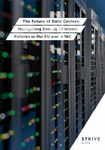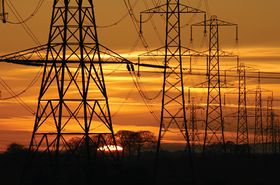You cannot manage what you can’t measure, the old saying goes. But when it comes to sustainability, nothing can be done without adequate measurement – of power, water, and carbon usage; measurements that ultimately tap into almost every aspect of data center operations.
Power usage effectiveness (PUE) proves how effective a good metric can be. When it was first proposed by Christian Belady and Chris Malone in 2006, the average data center PUE stood at around 2.5, meaning that every 1kW of compute power required 2.5kW of electrical power to produce it.
That PUE of 2.5 probably didn’t even account for the many inefficient legacy enterprise data centers that were still chugging away in the stuffy backrooms of poorly run SMEs at the time.
Since then, though, even those SMEs have shifted their IT into either colocation facilities or the cloud, and average PUEs now stand at 1.6, while the large investments from the big boys – Google, Meta (formerly Facebook), Microsoft, and others – enables them to achieve PUEs of around 1.1 in their marquee facilities.
The efficiencies that have been squeezed out by this very simple, straightforward measurement have therefore helped to drive huge savings in terms of power, money, and carbon emissions, but industry figures increasingly warn that PUE is reaching the end of the road and that other metrics are required to continue pushing the industry in the right direction.
“PUE was great ten years ago. It was a simple metric we could all use and it really drove energy efficiency and reduced costs,” Carsten Baumann, director of strategic initiatives and a solution architect at Schneider Electric, told a panel discussion on DCD’s Energy & Sustainability Channel.
“But PUE has been around for some time and most of the ‘low-hanging fruits’ in our data centers have been captured. There’s still more work that could be done, but we’re reaching the point of fast diminishing returns,” he adds.
Part of the issue is the greater awareness of broader environmental issues, such as water usage, as well as the increased focus over the past decade on carbon reduction. Moreover, the sheer volume of data center capacity that is being added makes the issue even more acute, and this will only increase as generative AI applications go mainstream over the next decade – just as all those big data center net-zero deadlines come into view.
The industry isn’t short of ideas over the next steps that could potentially be taken, and the kind of data that needs to be incorporated into new metrics. Nor is it solely being pushed by data center operators who want to be seen as sustainable, but by their increasingly demanding customers; and not just the biggest customers but, increasingly, rank-and-file customers, too.
“We’ve always been very good at reporting energy use because that’s our bread-and-butter. But now our customers are becoming more sophisticated in terms of the type of data they are looking for in order to measure their own overall sustainability performance in our facilities,” Amanda Abell, senior director of sustainability at Vantage Data Centers, tells DCD.
The pressure has been ratcheted up by the well-publicized decarbonization projects of aforementioned big-name companies, such as Microsoft and Google, in their attempts to find something more sustainable than diesel power for backup on the one hand, while also attempting to achieve genuine, 24/7 renewable power for their facilities.
“Google is trying to achieve 24/7 carbon-free energy. That’s the next level of granularity that we need to be able to provide to customers within our facilities, because Google certainly isn’t the only one asking that question, trying to tie energy use with real-time renewables from the grid.
“To do that you need almost minute-by-minute – at a minimum hourly – data on operations so that you can assign each electron to a customer for their operations. They haven’t asked for it yet, but we can see that trend coming,” says Abell.
Even if a data center operator is able to provide 100 percent renewable power in a facility with a low PUE, the conversation will then turn to water usage, says Adam Witkop, chief technology officer at Crane Data Centers, which hopes to build sustainability-focused data centers in the US. And those questions aren’t just coming from customers, but the municipalities in which Crane is looking to expand into.
“It even goes beyond energy and water use. We’re also getting questions around the carbon impact of how we build and how we operate,” says Crane’s Witkop.
In other words, while PUE was straightforward (even if it could be ‘gamed’ by less scrupulous organizations, the scope for doing so was limited) tackling this range of environmental issues with new metrics introduces a plethora of complexities.
“It’s going to require digitization; a ‘single source of truth’ of data from companies and driving transparency industry-wide,” he says. Perhaps, he adds, it requires something akin to food labeling to enable different offerings to be fairly compared.
“By far the largest contributor to carbon emissions is the embodied carbon in the supply chains,” says Baumann. So the first step is to ensure that any product or service comes with an environmental product declaration, as specified by ISO 14025. This will provide an environmental lifecycle assessment that can help organizations capture their Scope 3 carbon emissions, enabling them to choose lower carbon options.
However, ISO 14025 is still in its infancy and the level of information required means that it is somewhat bureaucratic – it even requires third-party certification, so is not going to be suitable for a wide range of goods and services.
“I wouldn’t say that our own customers are asking for that level of granularity [on carbon emissions] at this point,” says Witkop. “Our customers are still really focused on energy and water at this point.”
Crane is looking to suppliers like Schneider to provide that data so the company is prepared and ready when customers start to ask questions about Scope 3 emissions. “The challenge is that not every supplier is like Schneider and they’re not all doing this and, if they are, they’re not all doing it the same way,” he adds.
Even something as mundane as the concrete used to construct Crane’s data centers can have different levels of carbon embodied in the mix depending on where it is made. Witkop adds: “The challenge for us as a developer is how do we get to the point where some of these metrics and reporting standards become as pervasive as PUE?”
But the question is, will all these efforts yield genuine, sustainable environmental benefits? Some remain skeptical.
In September, Princeton University’s ZERO lab released a working paper on the most common net-zero energy-purchasing policies pursued by some of the world’s biggest companies. It concluded that they will have little or no long-term effects on reducing carbon emissions.
The research paper, ‘System-level impacts of voluntary carbon-free electricity procurement strategies,’ suggests that the large-scale purchases of renewable power by organizations that want to be seen as green don’t take into account the bigger picture. One power-hungry organization tying up long-term contracts for limited renewable energy contracts often just means less for other organizations, at a higher price. Therefore, it can simply lead to the displacement of carbon emissions.
Even shifting from renewable energy certificates (RECs) to power purchase agreements (PPAs) - in which the customer pays for a certain quantity of renewable power to offset its own use - only goes so far, the report suggests.
Nevertheless, it does highlight the need for measurements and metrics that everyone can rely upon, as well as action on sustainability which is about more than just one organization serving itself.





